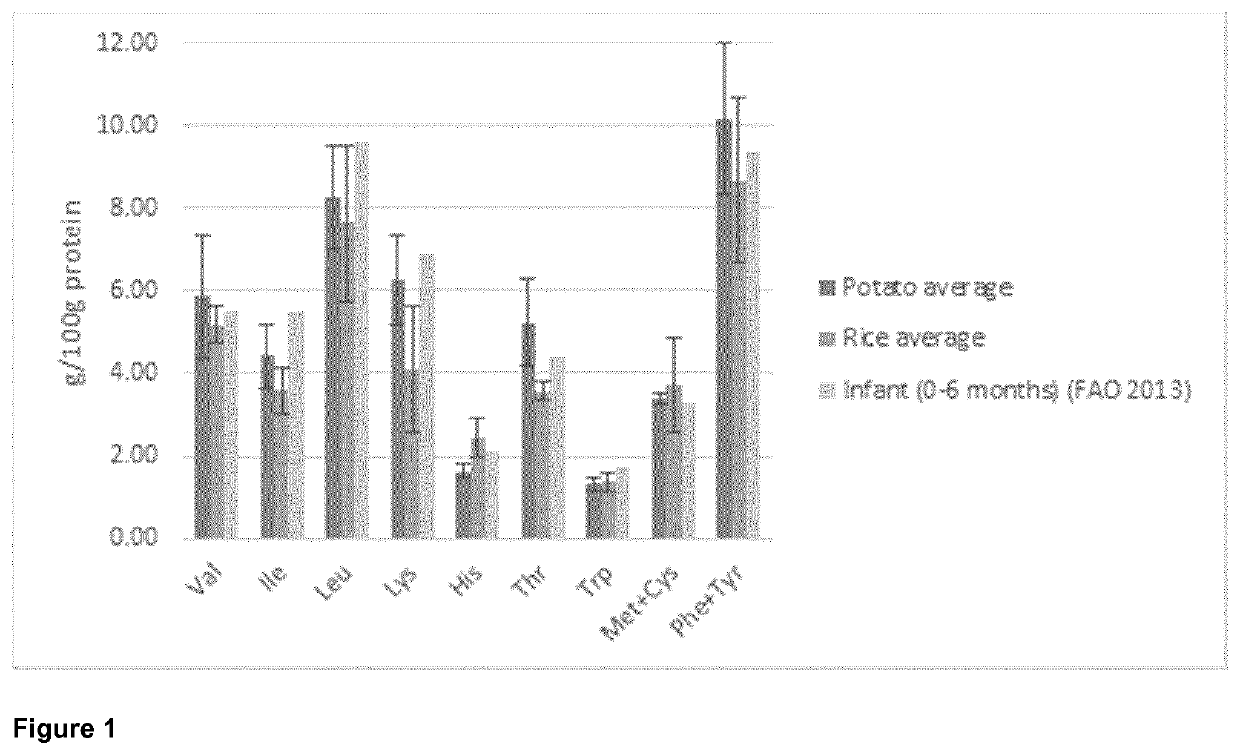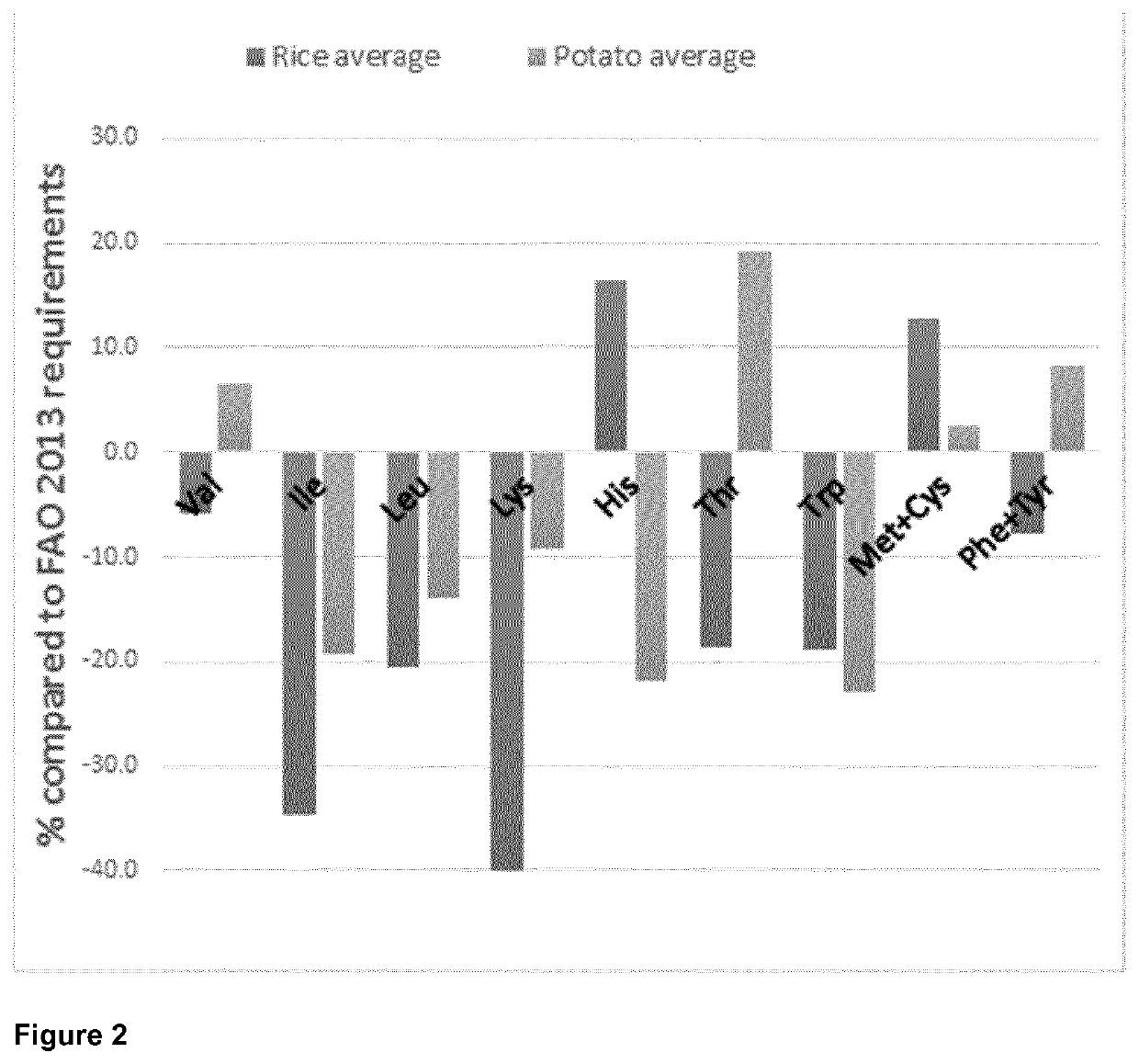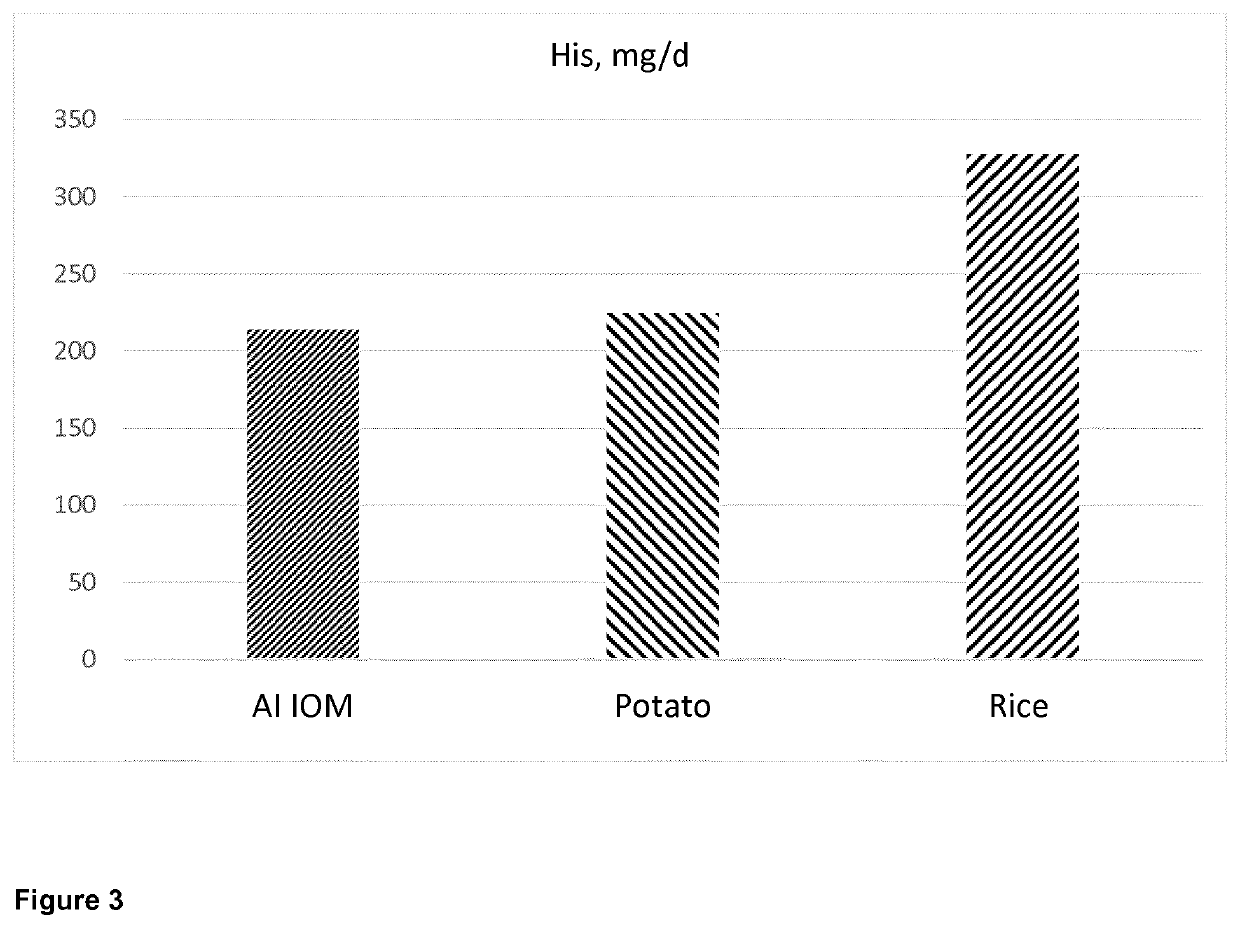Method for producing a nutritional composition
a technology of nutritional composition and composition, applied in the field of nutritional composition, can solve the problems of formulas unsuitable, not all infants can be breastfed, and the needs of more vulnerable infants, such as preterm infants, cannot be met,
- Summary
- Abstract
- Description
- Claims
- Application Information
AI Technical Summary
Benefits of technology
Problems solved by technology
Method used
Image
Examples
example 1
[0177]Nutritional Comparison Between Potato Protein and Rice Protein
[0178]Potato protein contains higher levels of the following essential amino acids compared to rice protein (FIGS. 1 and 2): valine; isoleucine; leucine; lysine; threonine and aromatic amino acids.
[0179]The concentrations of tryptophan and the sulphur-containing amino acids are similar between potato and rice proteins.
[0180]However, rice protein contains higher concentrations of histidine than potato protein.
[0181]Overall, the essential amino acid concentrations in potato protein are better than rice protein, and may require lower levels of additional amino acid fortification.
[0182]Potato protein contains more essential amino acids in compliance with the FAO 2013 recommendations compared to rice protein (Table 1).
[0183]
TABLE 1Amino acid concentrations in potato and riceproteins that are complaint with the FAO 2013recommendations for 0-6 month-old infants.Amino acidPotatoRiceVal✓xIlexxLeuxxLysxxHisx✓Thr✓xTrpxxMet + C...
example 2
[0196]Methods of manufacturing nutritional compositions comprising potato protein with differing processes for addition of the minerals were compared.
[0197]The data in Table 2 show that the order of the addition of the minerals during the process of producing the nutritional composition has a significant effect on the viscosity of the liquid product. Optimising this order makes it possible to achieve viscosities which improve spray drying and the quality of the spray-dried powder product.
[0198]Specifically, it was found that adding some minerals (e.g. calcium citrate and / or potassium citrate, and optionally sodium citrate and / or potassium phosphate monobasic) to the solution before the potato protein was beneficial in terms of the viscosity of the resulting solution. Other minerals (e.g. magnesium chloride, magnesium oxide, calcium chloride, calcium glycerophosphate and / or sodium chloride, and optionally calcium phosphate, potassium hydroxide and / or sodium hydroxide) could be added ...
PUM
 Login to View More
Login to View More Abstract
Description
Claims
Application Information
 Login to View More
Login to View More - R&D
- Intellectual Property
- Life Sciences
- Materials
- Tech Scout
- Unparalleled Data Quality
- Higher Quality Content
- 60% Fewer Hallucinations
Browse by: Latest US Patents, China's latest patents, Technical Efficacy Thesaurus, Application Domain, Technology Topic, Popular Technical Reports.
© 2025 PatSnap. All rights reserved.Legal|Privacy policy|Modern Slavery Act Transparency Statement|Sitemap|About US| Contact US: help@patsnap.com



